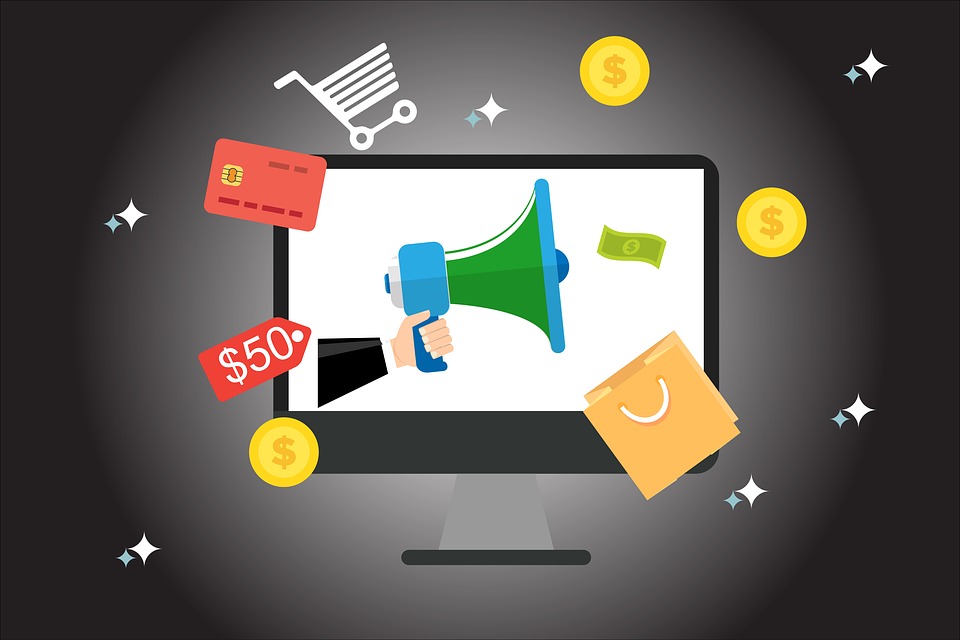E-commerce (electronic commerce or internet commerce) infers to the trading— buying and selling of services and goods over the internet. Although the term e-commerce is mostly used for selling physical products over the internet, it can also mean all types of commercial transactions executed through the Internet. In contrast, e-business means all aspects of online business.
History of e-commerce
E-commerce started with the first online transaction on August 11, 1994, when a friend bought a CD from band Sting through NewMarket website from his friend. This transaction was the first time a consumer would buy a product through the www.
However, this market has developed in recent years and is now comfortable for transactions. There are freelancers, large corporations, and medium and small businesses benefiting from e-commerce. Interestingly, the global e-commerce deals are projected to $27 trillion before the end of 2020.
While e-commerce is a great platform to make money online without selling anything in a physical store, there are other online businesses one can venture into. Among them are:-
1. Dropshipping
This is a very lucrative online opportunity that allows you to buy products from manufacturers or other retailers and ship them to your customers. One of the advantages is that it’s a market you can enter easily.
2. Print on demand.
This is a commercial business for artists and designers. Print on demand allows you to connect to a supplier to print bags, t-shirts, and souvenirs for your customers. You don’t even have to pay upfront for anything until your customers pay.
3. Sell digital products
By 2025; this industry worth will be above $331 billion. The eLearning platform allows you to sell music, videos, ebooks, and online courses over the Internet. It’s highly lucrative as you do not have to worry about printing or having a physical store.
4. Photography selling
Many platforms allow you to sell photos online; among them are 500px, Shutterstock, and iStock. Three requirements to sell your pictures are 1. Find a suitable niche; it can be on flowers, landscapes, travel building, or nature. 2. Have a targeted audience on media by promoting your pictures. 3. Make sure you take advantage of multiple platforms to sell photos.
5. Self-publish a book
This is one of the most lucrative business opportunities. By self-publishing, you don’t worry about having a traditional publisher or having a physical book. You smile to the bank when you write a niche people want to read. You can also turn the book into an audiobook and earn more.
6. Blogging
This is a reward for passion as you choose a niche that suits you and makes money through many means on your blog— affiliate marketing, advertising, info products, among others.
7. Virtual assistant
It’s long gone the days where you have to sit on a desk and work for a peanut. Virtual assistant allows you to work for companies or business people in the comfort of your home, running their social media platform, attending to emails, and other similar works.
8. Social media manager and consultant
These aspects are lucrative as you can offer your expertise to people or garner enough audience and promote brands and services.
9. SEO Consultant
Many bloggers and company’s websites want their blogs and websites to pop up on the first page of search engines, and they pay well to SEO experts.
10. Affiliate Marketer
In your pajamas, you can earn enough by promoting links to products and earn a commission when someone buys a product through the link.
The list of ways to make money online is endless. Others are being a podcaster, eBay seller, content creator, youtube personality, website designer, website developer, graphic designer, domain seller, app developers, and freelance writer.
However, I will guide you on the steps needed to start a profitable e-commerce business.

How to start a profitable e-commerce business
Buying and selling online was a luxury and for convenience in the past but now, e-commerce is necessary, especially with this pandemic. There are certain things to put in mind before starting the business which are:-
Many e-commerce businesses struggle online and take many years to get it in order. However, with a complete guide on how to start e-commerce, how to market and sell your product, how to set up an e-commerce store, and how to legally protect yourself and your business, you should not have a headache breaking into the market.
It’s possible to start from scratch and see it blooming. However, starting is not limited to choosing a brand name, listing your products on sites like Amazon or Konga to start selling your products. Therefore, we will walk you through the necessary steps to start.
Thorough research on the model of your business
You don’t want to start without doing a background check of your business. You should also know that every company has its peculiarities; therefore, understand every business model available. For example, dropshipping or print on demand is an excellent choice if you do not have enough startup funds or maximize your profit. However, if you’re going to stockpile your warehouse, your model should be a wholesaling model. Yet, someone interested in having a product idea or a specific product under his brand will choose a manufacturing model.
Thorough research on your niche:-
To run a profitable e-commerce business, you need thorough research on the niche you want to start with — the importance of this is endless. You may lose focus, having hundreds of different products in various categories of your store. Therefore, you must choose the best niche for your business; start this by first recognizing the successful ones in this niche and understand the level of competition.
Also, you may have to avoid a saturated niche dominated by big brands. So, research in-depth to find spaces in your niche. Also, find out how a particular niche trends in social media, niche with a minimum of 1000 keywords. Similarly, find out the cost of shipping your products to see if people will prefer to buy what is around them or ship from far places.
Understand and validate your targeted market and your product
After analyzing the requirements above, the next is to validate your market and the ideas you have. Rushing to sell a particular product is not the next, but to understand your customers and consumers.
Answer questions like who are your ideal customers? Where are they found? What should I be known for? Is my product a solution to their problems? Are they willing to pay for this? These questions would make you understand who your ideal customers are. More welcoming is the Facebook algorithm to help you target ideal customers by getting their demographics. If your product idea is a menstrual pad, Facebook will help you target women of child-bearing age.
The next thing to do after targeting your ideal customers is validating your product idea. When you are confused about coming up with a particular product, you can use affiliate marketing to validate your ideas.
Likewise, validate your ideas by determining whether it’s viable, the price of the product from your suppliers, and if there is a backup plan in case there is a hassle from your supplier.
Get Professional— have a license, register your business, pick a store’s name, and have a logo
Make sure you choose a brand name that fits your niche, although it doesn’t need to be the same as your site name. Accordingly, register your company to enjoy some tax and legal protection. Next is to get your business license from the authority; if you don’t know where to turn, browse it, or ask your mentor. You also need an Employer Identification Number (EIN), a form of social security number, to open a business account and also to file your taxes. Also, find out if there are any special permits or licenses from your city or country to run a business.
Other requirements are logo creation, having a specific color, image, and fonts for your brand. Consider having the right vendor for your product by considering the location, price, and trust.
Conclude your plan
After all of the above processes, your business plan is ready. What is left is to sit back, watch the plan, ruminate over it, determine your budget, and have the plans in print. Make sure you project your investment and revenue and also have a projection over your profit margin.
Do you need any logistics, marketing budget, product sourcing, and staff number, document them in your plan?

Create your online store
You have a wide array of stores to choose from, and you might get confused considering the best store. What you should consider in choosing your store are SEO features, loading speed, how compatible is the store with your business, how popular it’s with your targeted customers, and others.
These are the best e-commerce stores you can choose from:- BigCommerce, Shopify, Wix, 3dcart, WooCommerce, Volusion, Prestashop, Weebly, Squarespace, and Magento.
However, if you don’t want to worry about credit card payments, Amazon is a great marketplace to sell.
Getting customers to your products
The next headache you will have is how to drive traffic to your store. The biggest brands spend a lot on marketing; you may have to do the same. You also need to listen to expert opinions by subscribing to newsletters and listen to podcasts to know if you should go for a pay-per-click ad, run social media campaigns, and, or a combination of many.
The idea is not to drive traffic but to sell. Therefore, create an email list, have social media campaigns to get subscribers.
Other marketing tactics are running a giveaway to increase your brand visibility and sales conversion, giving coupons to email subscribers, keeping your emails attractive and engaging, offering free values, and swift response to customers’ complaints to boost your business.
Also, watch your traffic flow to see if your products are getting to the targeted persona, to see the conversion rate, fix your sales funnel to see how your product is improving. Also, partner with top brands in your niche and offer affiliate marketing options to boost your media presence.
Gather reviews and testimonies from previous customers to convince potential customers. You may also offer free products to bloggers in your niche to review your products.
By this, we believe your products or services will generate leads that convert to sales. Enjoy your e-commerce business.
